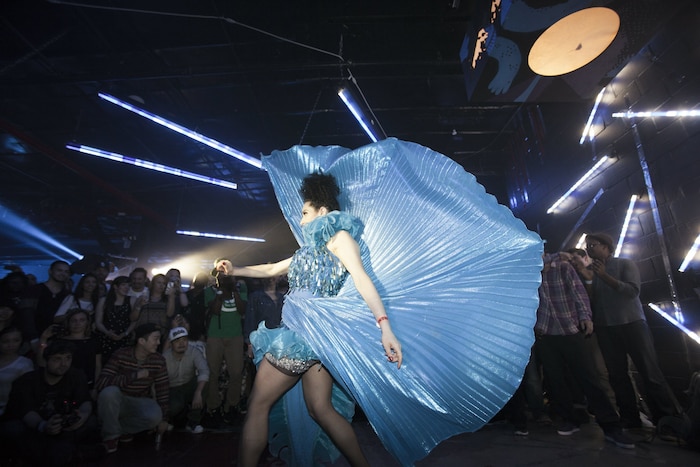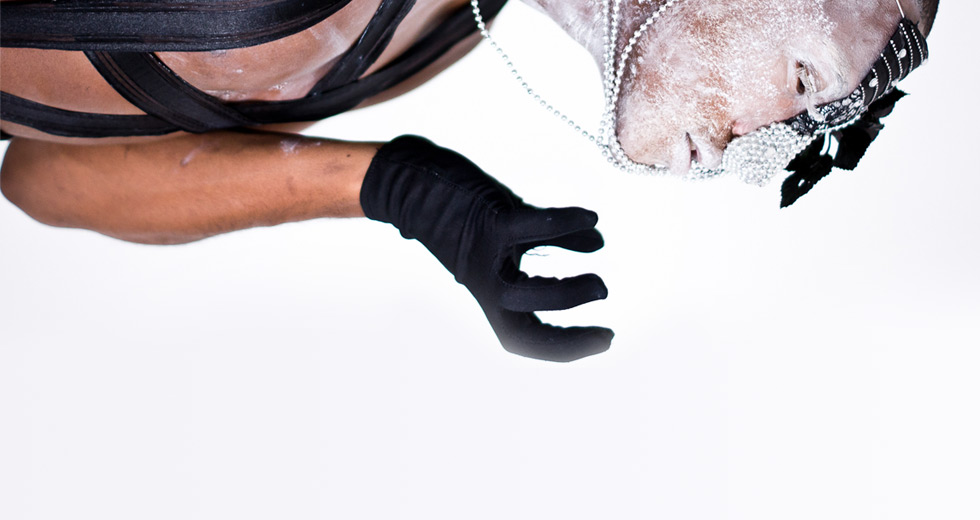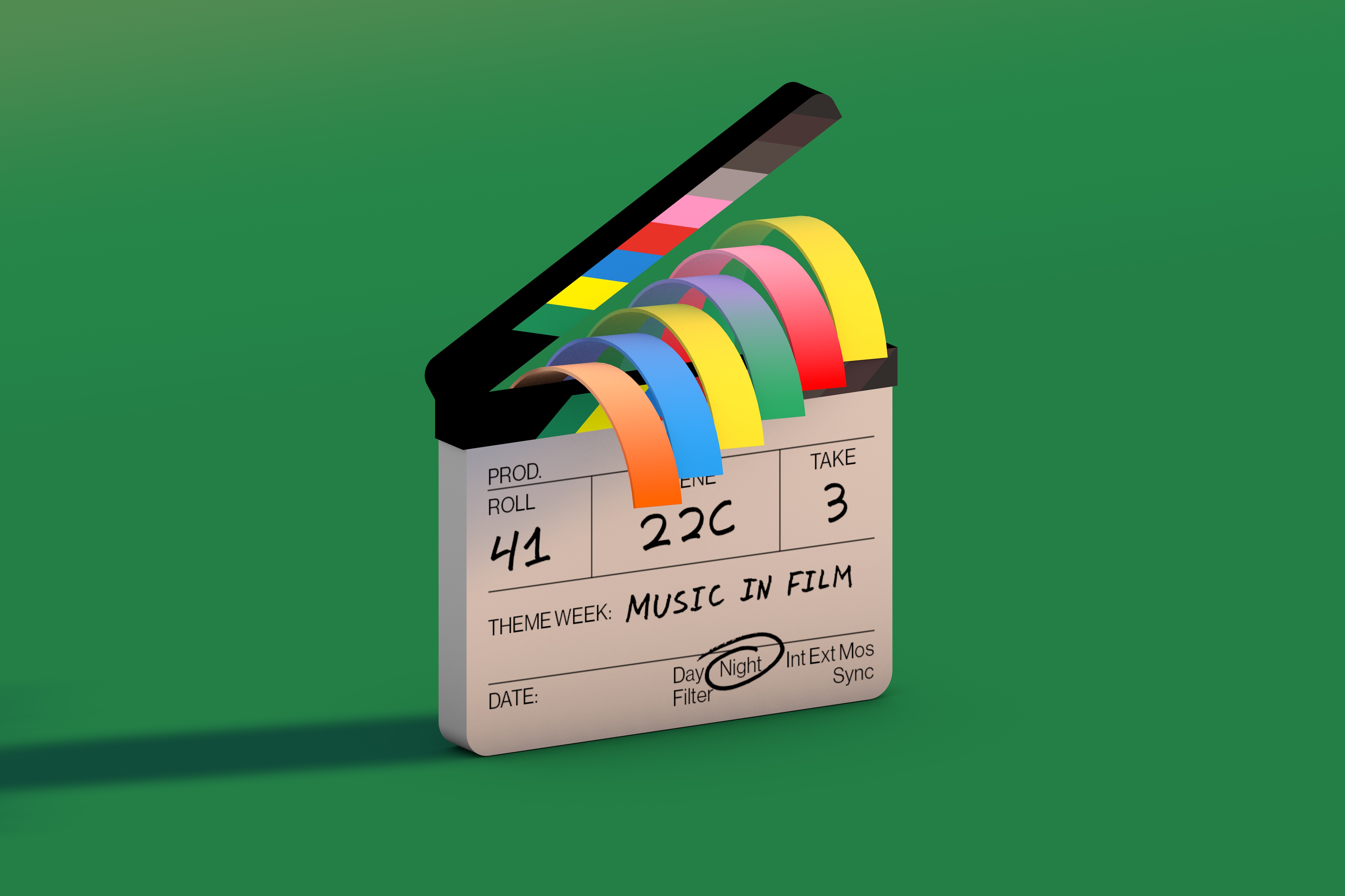Key Tracks: “The Ha Dance”
Lakin Starling recounts how a controversial sound bite from the 1983 film Trading Places became a quintessential vogueing hit

At the dawn of the ’90s, the house production duo Masters At Work transformed a film sound bite into a ballroom classic, “The Ha Dance.” DJ and producer Kenny Dope had made an arbitrary decision to pull the titular “ha” from the notorious train scene in Trading Places, a problematic 1983 comedy that confronts socio-economic disparities while also making light of racist and queerphobic references. In the scene, characters Billy Ray Valentine (Eddie Murphy) and Louis Winthorpe III (Dan Aykroyd) belt out the sound in the midst of a babbling conversation they’ve made up in efforts to go along with their ridiculous disguises. Valentine poses as an African exchange student and Winthorpe, who’s wearing blackface, attempts to pass as a Jamaican man. In his 2012 RBMA lecture, Dope explained that he wanted to turn the sample “into something harder,” a decision that would ultimately cause the “Ha” to create a wholly separate and righteous legacy of its own.
Modern ballroom stretches back to the 1960s, when black and brown queer and trans people began throwing balls: affirming and extravagant spaces in the New York City underground scene where performers could imagine a more inclusive and vibrant expression of style and beauty on their own competitive runways. The balls and their houses became sacred havens and creative avenues for LGBTQ youth who’d been banished by their loved ones and home communities. In the early ’80s, MFSB’s 1973 hit “Love Is The Message” reigned as a resounding anthem at balls across the city, and the next mega ballroom track would come in 1991 with the release of “The Ha Dance.”
When the MAW song hit the clubs and then the vogue scene, ballroom still didn’t have an abundant musical catalog, but a more femme and intricate style of vogueing had started to emerge. The classic backbends and swan-like drops were landed perfectly to the punchy tempo of the “Ha,” giving dancers the sonic support to be both graceful and intense. Since then, the track has become one of the most lauded and defining tracks in the history of ballroom culture. “It’s very catchy with its repetitive vocal loop,” the scene’s beloved DJ MikeQ says. “And then you have that ‘Ha crash’ sound that hits on the four-beat, which totally intertwines with ballrooms ‘dip’ element of basically falling to the ground in a dramatic or soft way.”
Mike’s earliest memory of hearing the “The Ha Dance” was during his first time at an LGBTQ party at the New Jersey club called the Globe. “This is where I first got exposed to ballroom and that sound,” he remembers. “It was at the end of the night and the DJ played this track, which was a remix of the ‘Ha’ as we know it, but it was a defining moment with a sound that would still follow me to this day, 16 years later.”
You can be anywhere playing anything else and when “The Ha Dance” comes on, bodies start to move differently.
Mike maintains that the “Ha” evokes the same rushing response now that it did back when he was a teen. “Oh my God, it’s crazy massive. Everyone in ballroom knows that sound, but then you have your house heads who are also familiar with it since it’s a part of MAW’s work,” he says. “You can be anywhere playing anything else and when that one comes on, bodies start to move differently.” MAW laid the foundation with the original “Ha” and since then its signature beat has taken on many forms, with imaginative remixes like “Godzilla Ha,” a “Thundercat Ha,” and MikeQ’s “Rewerk’d” version In a 2012 interview with Vivian Host on RBMA Daily, MikeQ revealed that he’s singlehandedly produced “at least 350-400 ‘Ha’s’” throughout his career.
One of the most influential interpretations came in the mid-2000s, when ballroom sensation Vjuan Allure put a famous spin on the track with his charged up, battle-ready version. “It was the start of ballroom as a music genre,” the scene’s mainstay DJ Byrell the Great says about the impact of the “Allure Ha.” “This led to beats being created for categories other than vogueing. As more and more ballroom producers played with the sounds things started to change. Beats became faster, which means so did performers.” The shifting sounds of the “Ha” ushered in an even more metallic edge that’s enlivened the force of competition amongst dancers and ball walkers. In the present day, Byrell says DJs mix the thunderous four-beat in with other tracks because voguers love to hear the crash while they square off on the floor.
“The typical time it takes to get 10s across the board is about 30 seconds. In that amount of time the song opens, builds and drops – all giving performers time to catwalk, duckwalk, spin and dip, and floor perform in a way that appeases the judges,” Byrell explains. The skittish pulse of the “Ha” evokes a response from crowds, judges and performers similar to the improvised refrains that ball commentators “chant” into the mic. They both create a call-and-response dynamic between sound and the bodies that grace the floor, amping up each voguer to bring their all. Iconic ballroom figure Dashaun Wesley, also known as the “King of Vogue,” commands the runway as both a celebrated performer and commentator. In his bass tone, he enlivens balls with his witty chants, with affirming phrases like “That transition was cunty oww, that transition was cool.” The lines often end right on the four-beat, with the same timing as the “Ha.”
Ballroom DJs’ capacity to build this energy through sampling continues to expand the power and potential of the production technique. Aside from MAW’s reinvention of the moment in Trading Places, other ballroom songs have also used stand-out bits from films – but MikeQ says none have hit quite like the original “Ha.” “There are tracks that sample Paris is Burning, but that’s moreso another element of the genre that came after, because even those tracks will be mixed with ‘Ha’ samples,” he explains. “I’ve heard other ballroom tracks from movies like Kill Bill (“The Kill Bill Ha”), and I’ve heard Della Reese’s voice from Harlem Nights saying “I am in charge of the girls.”
These musical renderings speak to the innovative spirit of ballroom culture, and while the “Ha” came from a movie with offensive commentary – similar to Eddie Murphy's vulgar jokes in his famous 1980s stand-up sets like Delirious – MikeQ feels that it’s important not to center that aspect of its origins. “I want to say that the film had nothing to do with its [“The Ha Dance”] entering ballroom. The credit goes to Masters At Work for simply making a hot dance beat – for years you didn’t know that’s where it came from,” he says. The moral clash is ironic, but the evolution of the “Ha” and its longevity is symbolic of the importance of personal agency in the scene. Ballroom’s palette is enriched by the community’s authority over elements like space, identity, bodies and sound. DJ Byrell believes it’s in range for a track with a story like “The Ha Dance” to go off at the balls. “It’s not ironic to me that something with a problematic start would be turned into something good. Ballroom itself is built on problematic experiences and trying to escape them, mainly racism,” he says.
That sea change in the track’s current significance echoes the genius of marginalized generations and black and brown people who’ve built cultural empires despite oppression or lack of sanctuaries and resources. “It shows that we work with what we are given and create gold from that. Like ‘The Ha Dance,’ much of ballroom is borrowed ideas that are turned into our own,” Byrell continues. With the popularization of vogueing and its performers and deep history, ballroom’s entered the mainstream across music genres, theatre productions (The Wiz! Live’s Emerald City), TV and film. Most recently, in 2018, screenwriter and executive producer Ryan Murphy debuted his scripted television series POSE, which magnified the highs and hardships of ballroom in 1980s NYC through a cast of compelling characters. While offering a nuanced and electric portrayal of the era, the show boasted the canon of ball tracks, including MAW’s “Ha.”
To thrive in ballroom, it’s essential to make a lasting impression on the room. For the “Ha,” that impact continues on as the scene stretches, influences and informs popular culture. Its journey transcends its beginnings in film, and regardless of the many brilliant adaptations, the implications of the track’s earliest impact will always remain. “Ballroom’s main existence is about overcoming things of the outside and creating your own world and safe space to exist in – we are just a redefining community by all means,” MikeQ says. “That track, once entered, will never not be heard of again in ballroom, and it just goes to show that we have a history and we are consistent and growing.”

